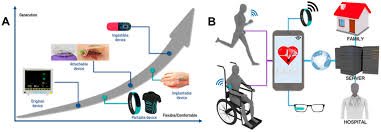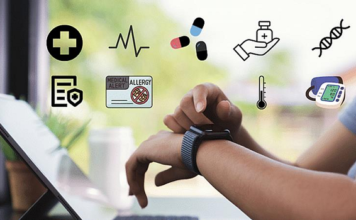In 2025, wearable devices and real-time health monitoring technologies have become more sophisticated, accessible, and integrated into everyday life. From smartwatches tracking heart rate to advanced biosensors monitoring blood sugar and sleep patterns, the market for wearable health technology is booming, especially in Tier 1 countries like the United States, the UK, Canada, and Australia.
But the big question remains: Are wearable devices truly worth it in 2025? In this blog, we’ll explore the latest trends, benefits, and potential drawbacks of wearables in health monitoring, helping you decide if investing in these devices is the right move for your personal wellness journey.
The Rise of Wearable Health Technology in 2025
The wearable health devices market is expected to grow exponentially this year, fueled by rising consumer interest in personalized health data and real-time monitoring. According to recent reports, smartwatches, fitness bands, and other connected wearables have seen record sales, with more people using them to track everything from heart rate variability (HRV) to oxygen saturation (SpO2) and even ECG monitoring.
This surge is powered by advancements in sensor accuracy, improved battery life, and integration with health apps that provide actionable insights. As a result, wearables are no longer just fitness gadgets—they’re becoming vital tools for proactive health management.
Key Features Driving Popularity
1. Continuous Real-Time Monitoring
One of the biggest advantages of wearable health devices in 2025 is their ability to provide continuous, real-time monitoring. This means users get instant feedback on vital signs such as:
- Heart rate and rhythm
- Blood oxygen levels
- Sleep quality and stages
- Stress and recovery indicators
- Physical activity and calorie burn
This constant stream of data empowers users to make informed lifestyle choices and catch early warning signs before conditions worsen.
2. Integration with Telehealth and AI
Wearables are increasingly syncing with telehealth platforms and AI-driven health assistants. These integrations allow remote monitoring by healthcare providers and personalized recommendations based on user data trends.
For example, AI algorithms can analyze your daily activity and sleep patterns to suggest customized exercise plans or alert you if your heart rate data indicates potential issues. This trend is making wearables a key player in digital health innovation.
3. Expanded Health Metrics
Today’s wearable devices track far beyond steps and calories. Some advanced models now include glucose monitoring (non-invasive), hydration tracking, and even detection of respiratory irregularities—features once only available in clinical settings.
The inclusion of mental health tracking, such as mood detection through biometric data, also reflects growing interest in holistic wellness.
Benefits of Wearables for Health Monitoring
Personalized Health Insights
Wearable devices offer highly personalized health data, unlike generic wellness advice. Users can monitor their own baseline vitals and notice deviations quickly, enabling timely interventions.
Motivation and Accountability
Tracking progress through wearables can boost motivation for fitness and healthy habits. Daily step goals, activity reminders, and sleep tracking encourage consistency and self-care.
Early Detection of Health Issues
Some wearables now have FDA-approved features for detecting arrhythmias or sleep apnea, potentially identifying health issues before symptoms become severe.

Are Wearable Devices Worth It in 2025?
While the benefits are compelling, it’s important to consider some limitations and factors before investing in wearable health tech.
Accuracy and Reliability
Despite major improvements, no wearable device is perfect. Sensor errors and data variability can occur, especially during intense exercise or certain health conditions. Always use wearables as a supplement to, not a replacement for, professional medical advice.
Privacy Concerns
Health data collected by wearables is sensitive. Data privacy and security remain top concerns, so choose devices from reputable brands with clear privacy policies and strong encryption.
Cost vs. Value
High-end wearables with advanced health monitoring features can be expensive. Consider your personal health needs and how you plan to use the data before making a purchase.
Trending Wearable Devices in 2025
Several brands continue to lead the market with innovative features:
- Apple Watch Series 9: Known for ECG, blood oxygen, and fall detection.
- Fitbit Sense 3: Offers stress management and skin temperature tracking.
- Garmin Venu 3: Focuses on fitness with extended battery life and advanced sleep tracking.
- Oura Ring Gen 4: A discreet ring that monitors heart rate, HRV, and sleep quality.
- Dexcom G7 (CGM): Popular for continuous glucose monitoring, especially among diabetics.
These devices often integrate with popular health apps, supporting a more comprehensive wellness ecosystem.
Future Trends: What’s Next for Wearables?
Looking ahead, wearable devices are expected to incorporate even more sophisticated features, including:
- Non-invasive blood glucose monitoring for diabetics without needles
- Enhanced mental health monitoring through AI and biometrics
- Integration with augmented reality (AR) for interactive fitness coaching
- Improved battery technology for longer use without charging
- Greater interoperability with electronic health records (EHR) for seamless care coordination
These innovations will continue to blur the line between consumer gadgets and medical devices.
Should You Invest in Wearable Health Tech?
If you’re someone who values data-driven wellness, enjoys tracking fitness progress, or wants to stay ahead with proactive health monitoring, wearable devices can be a worthwhile investment in 2025.
However, it’s essential to:
- Choose devices that suit your lifestyle and health goals
- Be mindful of privacy and data security
- Use wearable data as a guide, not a diagnosis
Incorporating wearable health technology can enhance your awareness, motivation, and engagement with your own health. But it should complement, not replace, regular medical check-ups and professional guidance.

